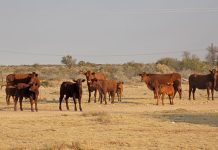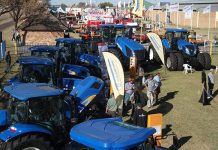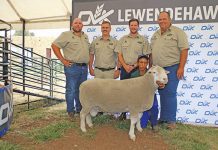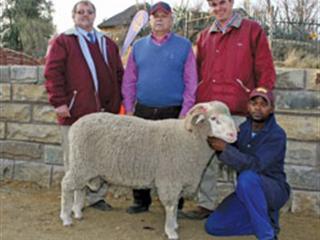Farming with cattle in the Vryburg area is not for the fainthearted, says well-known holistic farmer Dick Richardson, but he has proved that working with nature and sticking to common-sense farming principles make a world of difference.
Richardson was speaking at a recent workshop for sustainable parasite management at the University of Pretoria, where he emphasised the need for proper veld management to make the veld work for you when you need it most.
The keys to veld management are properly planned grazing and maintaining biodiversity, explained Richardson. Any veld management, or for that matter non-management, changes the ecological status of the veld and therefore its health.
“We all know that improved veld health means cheaper beef production and higher profits. But perhaps more importantly, good veld health leads to increased biodiversity, sustainability and reliability and ultimately to healthy rural communities and nations,” he said.
Farmers assess healthy veld in terms of nutrition, and grazing management dictates the quality and quantity of that nutrition. “To increase the quality and quantity [of nutrition], you need to focus on improved use of rainfall, soil health and greater biodiversity, among other things. Pay attention to plant productivity, predator-prey relationships, monitoring shifts in veld use and changing the way you manage each veld section,” said Richardson.
Plant productivity
The main roles of plants are to cover soil (with dead material and the living plant base), hold soil together with living roots (to stop soil erosion and slopes slipping) and capture solar energy and make it available to the rest of the food chain (to maintain energy flow and the carbon cycle).
Grasses are the main plant group for this job, but to be successful they must be healthy, productive and vigorous. Healthy plants have more bulk and produce more seeds. Grasses can only achieve this when energy that is used up from the plant’s reserves in the growth process is constantly replaced.
There are three variables involved in healthy grazing, namely timing, frequency and intensity.
Overgrazing and over-resting
Overgrazing, which has an impact on plant productivity, is not well understood.
“It has nothing to do with animal numbers, but everything to do with time,” said Richardson. “If the plant is re-grazed before it has replaced the initial start-up energy, it becomes overgrazed, reducing its health and vigour. This happens when the plant is exposed to grazing for too long or when stock is returned too soon (both in set stocking situations).” Richardson pointed out that the best indicator of recovery was the appearance of a grazed versus a non-grazed plant, not how much seed is produced.
Veld that is not grazed builds up old plant material. If there is not enough moisture to support insect life all year round, this old material does not rot away. It becomes matted and forms a thatch that stops sunlight reaching new growth, and so just as with overgrazing the plants run out of energy and die. The soil then becomes exposed and it deteriorates, allowing for a shift from healthy bacterial soil communities to fungal and lichen-based communities.
Healthy grazing
“Healthy grazing is characterised by severe grazing followed by adequate recovery periods. This prevents old plant material from building up and allows plants to establish reserves so they become vigorous and react well to rainfall. Vigorous plants are larger, thus increasing feed quantity. They also utilise more carbon in the carbon cycle, and consequently more carbon is pumped into the soil. The carbon supports bacteria that capture nitrogen for the plant, and nitrogen enables photosynthesis,” said Richardson.
With healthy grazing practices, the mineral and energy content of plants is high and the feed quality is improved. “Animals utilise nutrients best at the plants’ optimum production times,” he said. “If grasses are grazed too soon then the protein content is too high. If grazed too late, the lignin in the plants builds up and the protein content drops.”
Predator-prey relationships
In the wild, animals don’t normally spread out for long periods, but bunch tightly together as protection against predators. This creates footpaths, erosion and beaten-down areas around boreholes. Overgrazing occurs in more frequented areas, but plants and soil further away then die of rest [underuse].
“When predators approach a herd they cause a “fouling” effect, meaning they induce movement among the herd. This loosens the soil surface, which becomes covered with trampled plants,” Richardson said. This fouling effect leads to healthy soil by reducing overgrazing and over-compaction of the surface. The density and movement of the animals is key to soil surface health and plant vigour, which in turn regenerates the insect and organism populations and ensures biodiversity in the area.
Grazing management
Good grazing management leads to quick turnaround and self-regenerating grasslands and allows you to make the best of all weather conditions. “Moving the herd between many small areas during the growing season allows short grazing periods and adequate veld recovery,” Richardson explained. “This in turn leads to healthy stock with fewer parasites. This management strategy entails detailed monitoring of grazing use, animals, plant growth rates, biodiversity and soil surface condition. Early warning signs of deteriorating soil health are decreasing biodiversity levels and dung beetle populations.”
Contact Dick Richardson on 082 934 6139 or e-mail [email protected]. |fw









